No products in the cart.
NEWS
Unlock Abundant Harvests: Your Expert Guide to Growing Blueberries
Blueberries, those delightful bursts of flavor and nutrition, are a true treasure in any garden. As experts in nurturing vibrant growth at Biogarden.Asia, we understand the unique joys and challenges of cultivating these rewarding shrubs. Far from being finicky, mastering blueberry care is simply about understanding their specific needs. Once you grasp the fundamentals, you’ll be well on your way to harvesting your own sweet, juicy superfruits right from your backyard.
Growing blueberries isn’t just about planting a bush; it’s about creating the right environment for them to thrive. They demand attention, particularly regarding their soil and ongoing care, but the payoff in delicious, antioxidant-rich berries makes the effort incredibly worthwhile. Let’s delve into the secrets of successful blueberry cultivation, from choosing the perfect variety to protecting your precious harvest.
Why Embark on the Blueberry Growing Journey?
Beyond their exquisite taste, blueberries are nutritional powerhouses, packed with vitamins, fiber, and antioxidants. Growing them at home ensures you have access to the freshest, most flavorful berries, often surpassing those found in stores. The plants themselves are attractive additions to the landscape, offering delicate blossoms in spring, lush green foliage in summer, vibrant red and orange hues in fall, and interesting twig structure in winter. For us at Biogarden.Asia, it’s about connecting with the earth and enjoying the literal fruits of our labor.
Choosing the Right Blueberry Variety for Your Garden
The world of blueberries offers fascinating diversity. The two main types most home gardeners consider are Highbush (Vaccinium corymbosum) and Lowbush (Vaccinium angustifolium).
Highbush blueberries are the most common cultivated type, growing into upright shrubs typically 3-8 feet tall. They are well-suited to many garden settings and produce large, accessible berries. Varieties like ‘Bluecrop’, ‘Duke’, and ‘Bluegold’ are popular choices.
Lowbush blueberries are native to colder regions and grow as smaller, spreading plants, usually under 2 feet tall. They produce smaller, intensely flavored berries and are often associated with commercial production in places like Maine and Canada, but can be grown in home gardens if specific conditions are met.
Understanding the chilling requirements (hours below a certain temperature needed in winter) of different varieties is crucial for success in your specific climate zone. It’s also often beneficial to plant more than one variety to ensure better pollination and a more abundant harvest.
Creating the Perfect Home: Planting Blueberries
Blueberries have one non-negotiable requirement: acidic soil. They thrive in soil with a pH between 4.5 and 5.5. This is significantly lower than what most garden plants prefer, so testing your soil pH before planting is critical.
If your soil isn’t naturally acidic, you’ll need to amend it. Incorporating large amounts of peat moss, elemental sulfur, or specific acidic composts can lower the pH. For soils that are particularly unsuitable, or if you prefer a more controlled environment, growing blueberries in large containers filled with an acidic potting mix is an excellent option, as highlighted in our expertise at Biogarden.Asia.
Choose a planting site that receives full sun (at least 6-8 hours per day). Prepare the planting hole wider and deeper than the root ball, incorporating your acidic amendments. Plant the bush at the same depth it was in the nursery container. Water thoroughly after planting.
Fall is often an ideal time for planting blueberry bushes in many regions, allowing the plants to establish roots before the stress of summer heat.
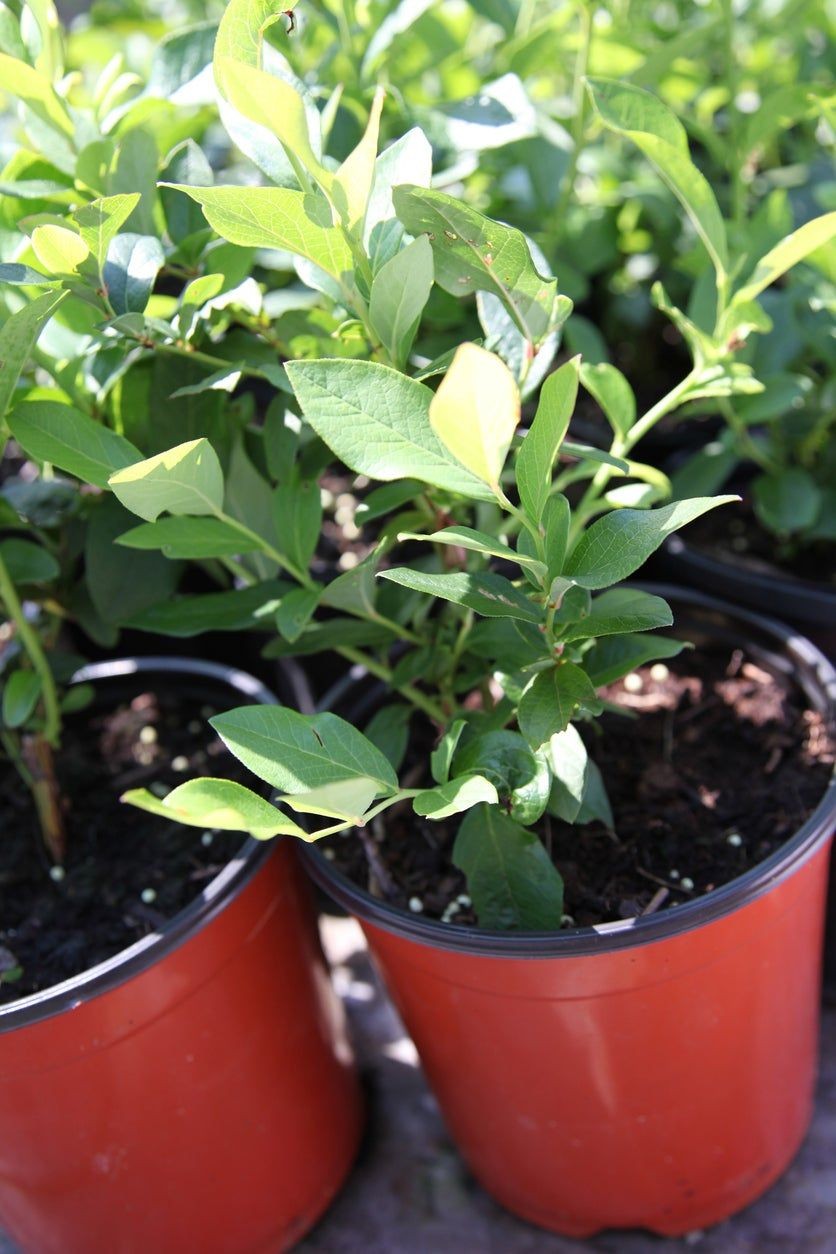 Potted Blueberry Plants
Potted Blueberry Plants
Essential Care for Thriving Blueberry Bushes
Once planted, ongoing care is key to maximizing your blueberry yield.
- Watering: Blueberries need consistent moisture, especially during fruit development. They have shallow root systems, so avoid letting the soil dry out completely. Aim for about 1 inch of water per week, more during hot or dry periods. Mulching heavily is vital to retain soil moisture and suppress weeds. Use acidic mulches like pine needles, pine bark, or sawdust.
- Fertilizing: Blueberries are sensitive to certain fertilizers and nutrient imbalances, particularly in non-acidic conditions. Use fertilizers specifically formulated for acid-loving plants (like those for rhododendrons or azaleas) or those containing ammonium sulfate, which helps maintain low pH. Apply fertilizer in early spring and possibly again in late spring, following product instructions carefully. Avoid fertilizers containing nitrates.
- Pruning: Regular pruning is essential for maintaining bush health, shape, and productivity. It encourages new growth, where the best fruit is produced, and improves air circulation, reducing disease risk. Learn how to prune blueberry bushes correctly to remove old, less productive canes and shape the plant for optimal fruit production each year. This is a crucial step often overlooked by novice growers.
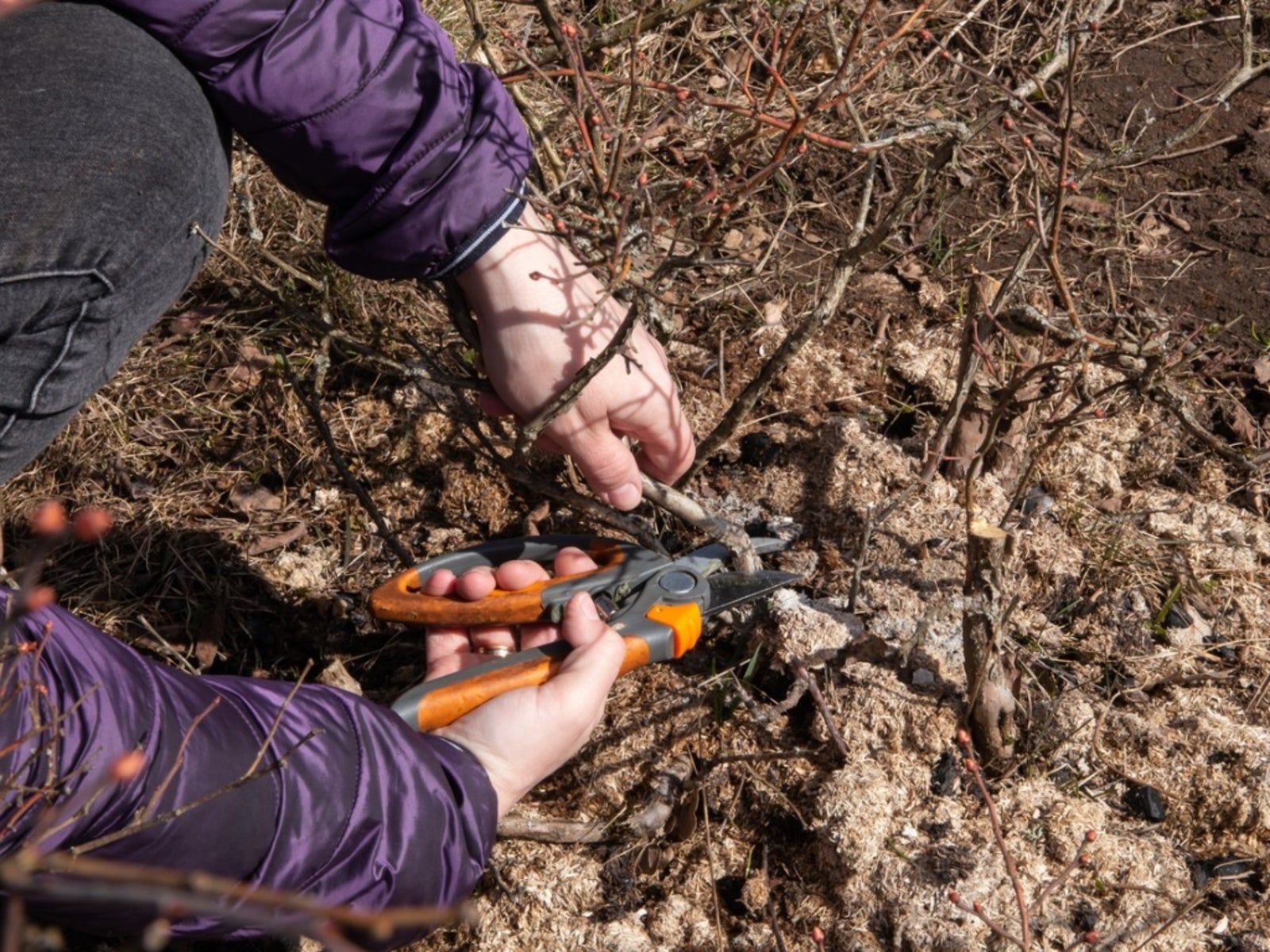 Pruning Of Blueberry Plants
Pruning Of Blueberry Plants
Expanding Your Patch: Propagating Blueberries
Want more blueberry bushes? Propagating blueberries from existing plants is a satisfying way to increase your stock. Softwood or hardwood cuttings are common methods. Taking cuttings in summer (softwood) or late winter (hardwood) and rooting them in an acidic growing medium under controlled conditions can lead to new plants. This process requires patience but allows you to easily expand your blueberry patch.
Protecting Your Precious Blueberry Harvest
You’re not the only one who loves ripe blueberries! Birds are notorious for stripping bushes clean before you even get a chance to pick. Protecting your blueberry plants from birds is often necessary. Netting is the most effective method, draped over the bushes just as the fruit begins to ripen. Ensure the netting is secured at the base to prevent birds from getting underneath.
Beyond birds, blueberries can attract various insect pests. Learning about common pests on blueberries and how to identify and control them using appropriate methods (which often involves integrated pest management strategies including beneficial insects or targeted, low-impact treatments) is part of responsible cultivation.
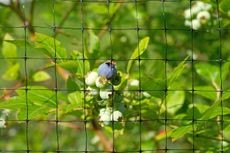 Blueberry Protected Behind Black Net
Blueberry Protected Behind Black Net
Troubleshooting Common Blueberry Growing Problems
Even with the best care, blueberries can face challenges. Understanding potential issues helps you respond effectively.
- Ripening Issues: Sometimes blueberry fruit will not ripen evenly or at all. This can be due to insufficient sunlight, improper watering, nutrient deficiencies, or sometimes varietal issues. Ensuring full sun exposure and consistent moisture are primary steps.
- Grainy Texture: Occasionally, harvested blueberries can be grainy on the inside. This might relate to specific varieties, environmental stress (like inconsistent watering), or potentially certain minor pest or disease impacts. Providing stable conditions is the best approach.
- Diseases: Blueberries are susceptible to several fungal diseases.
- Stem Blight & Stem Canker: These cause dieback of canes. Often linked to stress or damage. Management involves pruning out infected wood and practicing good sanitation.
- Mummy Berry: This fungal disease turns berries into shriveled, “mummified” fruits. It infects blossoms and young leaves in spring. Management includes sanitation (removing mummified berries and leaves) and sometimes fungicidal applications early in the season.
- Leaf Spot Diseases (like Septoria): These cause spots on leaves, potentially weakening the plant. Good air circulation, sanitation, and avoiding overhead watering can help.
- Botrytis Blight (Blossom Blight): This fungus can attack flowers and young fruit, especially in wet conditions. Improving air flow and sanitation are key preventative measures.
Controlling blueberry diseases often relies heavily on preventative cultural practices: choosing resistant varieties, ensuring proper spacing for air circulation, managing soil pH and fertility to keep plants vigorous, and promptly removing and destroying infected plant parts. For persistent issues, consulting resources on specific treatments, including organic options available through Biogarden.Asia, can provide solutions.
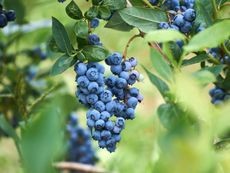 Septoria Leaf Spots On Blueberry Plant Leaves
Septoria Leaf Spots On Blueberry Plant Leaves
Enjoying Your Blueberry Bounty
Harvesting blueberries is the ultimate reward. Berries are ready to pick when they turn a deep blue color and easily detach from the stem. They don’t ripen further after picking, so wait until they are fully colored for the sweetest flavor. Pick gently and enjoy fresh, or preserve them by freezing, drying, or making jams and pies.
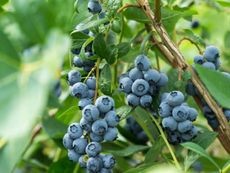 Bush Full Of Blueberries
Bush Full Of Blueberries
Conclusion
Growing blueberries is a deeply satisfying endeavor that enriches your garden and your table. While they demand specific conditions, particularly acidic soil, the process of meeting their needs and nurturing them from bloom to berry is incredibly rewarding. By understanding their basic requirements for sun, soil pH, water, and care, and by being prepared to address potential issues, you can cultivate healthy, productive blueberry bushes.
At Biogarden.Asia, we are passionate about helping you succeed in your gardening ventures. The journey of growing blueberries is one we encourage every home gardener to explore. Give it a try, apply these expert tips, and soon you could be enjoying the unparalleled taste of blueberries grown with care in your own garden.
References (Example – placeholder based on prompt instruction):
- University Extension Publications on Blueberry Cultivation
- Horticultural Society Guides on Fruit Growing



